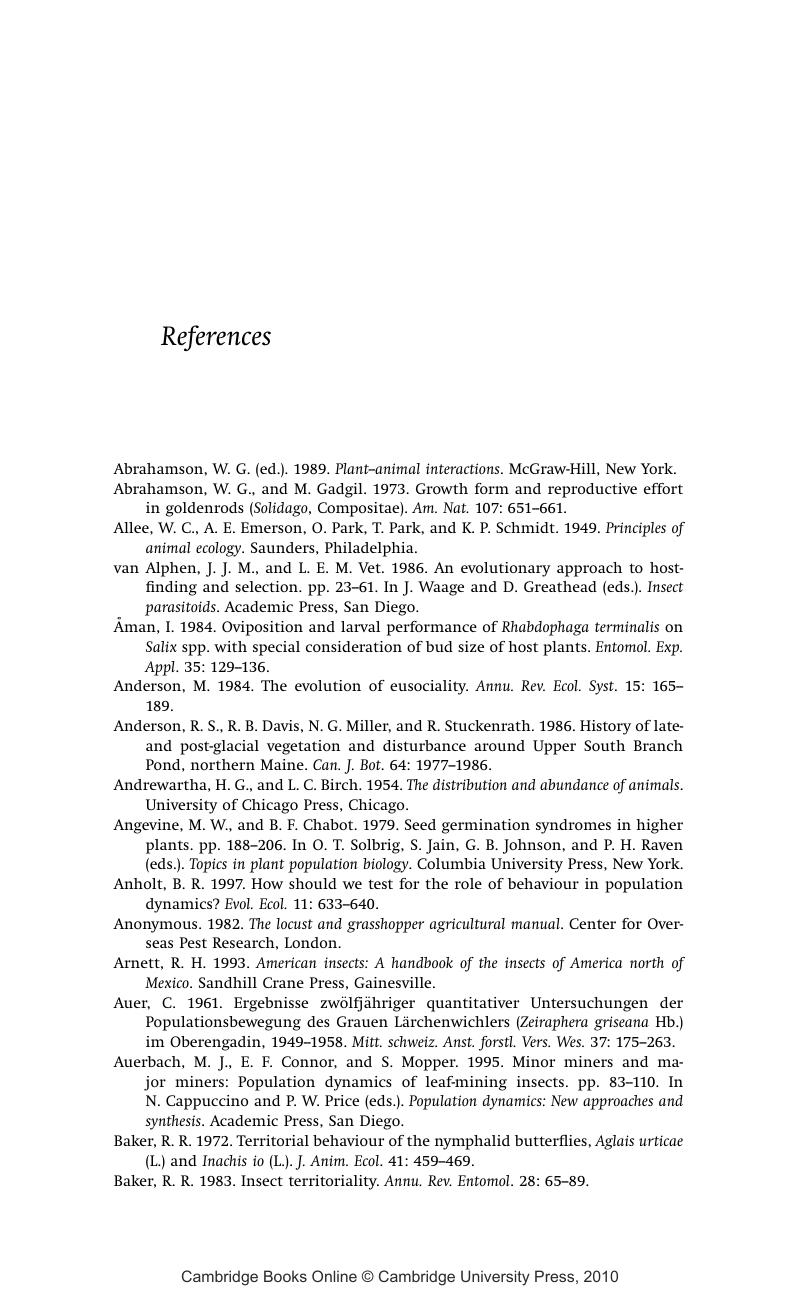Book contents
- Frontmatter
- Contents
- Preface
- Acknowledgments
- 1 The general thesis
- 2 Historical views on distribution, abundance, and population dynamics
- 3 The focal species – Basic biology
- 4 The focal species – Emergent properties
- 5 The focal group – The common sawflies
- 6 Convergent constraints in divergent taxonomic groups
- 7 Divergent constraints and emergent properties
- 8 Common constraints and divergent emergent properties
- 9 The thesis applied to parasitoids, plants, and vertebrate taxa
- 10 Theory development and synthesis
- Glossary
- References
- Author index
- Taxonomic index
- Subject index
- References
References
Published online by Cambridge University Press: 04 December 2009
- Frontmatter
- Contents
- Preface
- Acknowledgments
- 1 The general thesis
- 2 Historical views on distribution, abundance, and population dynamics
- 3 The focal species – Basic biology
- 4 The focal species – Emergent properties
- 5 The focal group – The common sawflies
- 6 Convergent constraints in divergent taxonomic groups
- 7 Divergent constraints and emergent properties
- 8 Common constraints and divergent emergent properties
- 9 The thesis applied to parasitoids, plants, and vertebrate taxa
- 10 Theory development and synthesis
- Glossary
- References
- Author index
- Taxonomic index
- Subject index
- References
Summary

- Type
- Chapter
- Information
- Macroevolutionary Theory on Macroecological Patterns , pp. 246 - 273Publisher: Cambridge University PressPrint publication year: 2002



